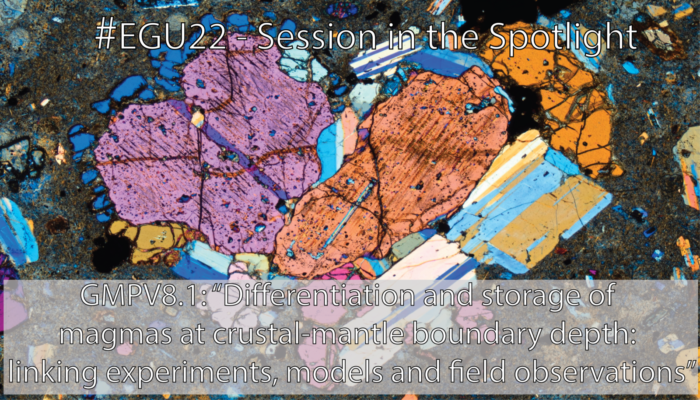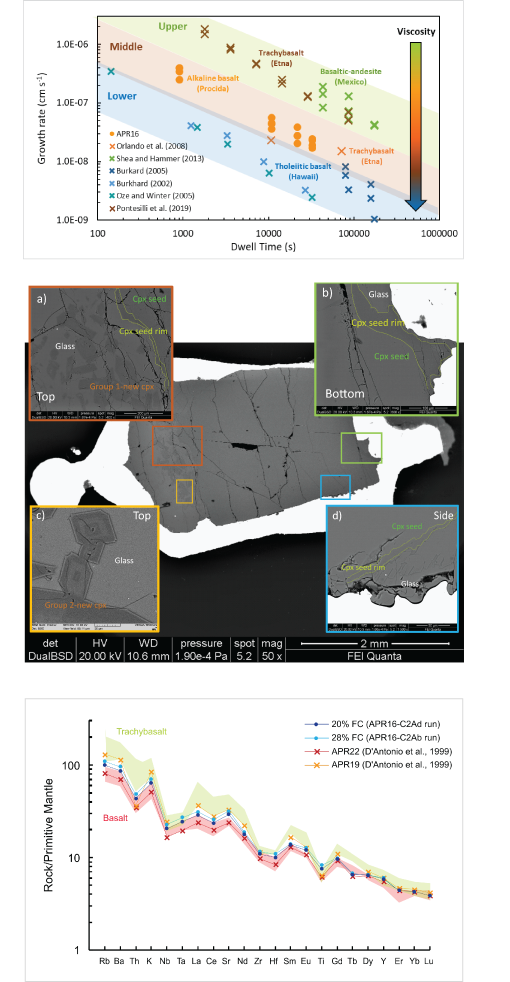
It’s slowly getting winter in Europe and everybody is slowly starting to finish everything left to do within this year. One thing you shouldn’t forget is to think about an abstract for #EGU22 – the deadline is just within the new year (12. January 2022). But which is the perfect session to accomodate the great science you performed during this year?
If you are working on magma chamber dynamics and crystal nucleation and growth during high-pressure differentiation and storage, todays session in the spotlight might be of particular interest for you! The interdisciplinary session GMPV8.1 “Differentiation and storage of magmas at crustal-mantle boundary depth: linking experiments, models and field observations” is organized by Barbara Bonechi, Cristina Perinelli, Mario Gaeta and Alessandro Fabbrizio.
The conveners say:
Estimates of the timescales of magma formation, storage and ascent beneath active volcanoes and knowledge of magmatic processes can be obtained by several methods such as the investigation of kinetics of crystal nucleation, growth and dissolution and partitioning of trace elements between crystals and melts.
Top panel: Relation between clinopyroxene growth rate and experimental duration (Bonechi et al., 2020, BV). Middle panel: Backscattered photomicrographs of a dissolution-crystallization experiment (Bonechi et al., 2021, CG). Bottom panel: Primitive Mantle normalized trace elements patterns for primitive basaltic (APR22) and trachybasaltic (APR19) rocks, and the predicted composition of differentiated melts (Bonechi et al., 2021, GCA).
The kinetics of crystal nucleation and growth are fundamental for the interpretation of rock textures in terms of thermal history of a magma during its ascent to the surface and to constrain timescales of magmatic processes. Similarly, knowledge of dissolution kinetics of minerals is important to provide constraints on crystal residence times and magma chamber dynamics. Mineral dissolution and/or re-crystallization phenomena due to magma mixing, often produce phenocryst assemblages with disequilibrium textures and mineral zoning. In this context, intracrystalline cation exchange models are commonly used to calculate crystal residence times and magma ascent rates as well as the time elapsed between the refilling of a new and more mafic magma into sub-volcanic reservoirs and eruptions. Likewise, the study of the factors influencing the partitioning coefficients between crystals and melts is of paramount importance since they are frequently used to better understand magmatic processes, like fractional or equilibrium crystallization, assimilation, and partial melting.
This session seeks contributions to engage a discussion on a wider and integrated perspective including experiments, models and field observations focused on the study of timescales of magma formation, storage and ascent beneath active volcanoes, on the constraining of magma chamber dynamics and pre- and syn-eruptive physical and chemical magmatic variables, thus providing key information able to further contribute to the volcanic hazard assessment.
If this is the session for you, you can submit your abstract here 👈👈

